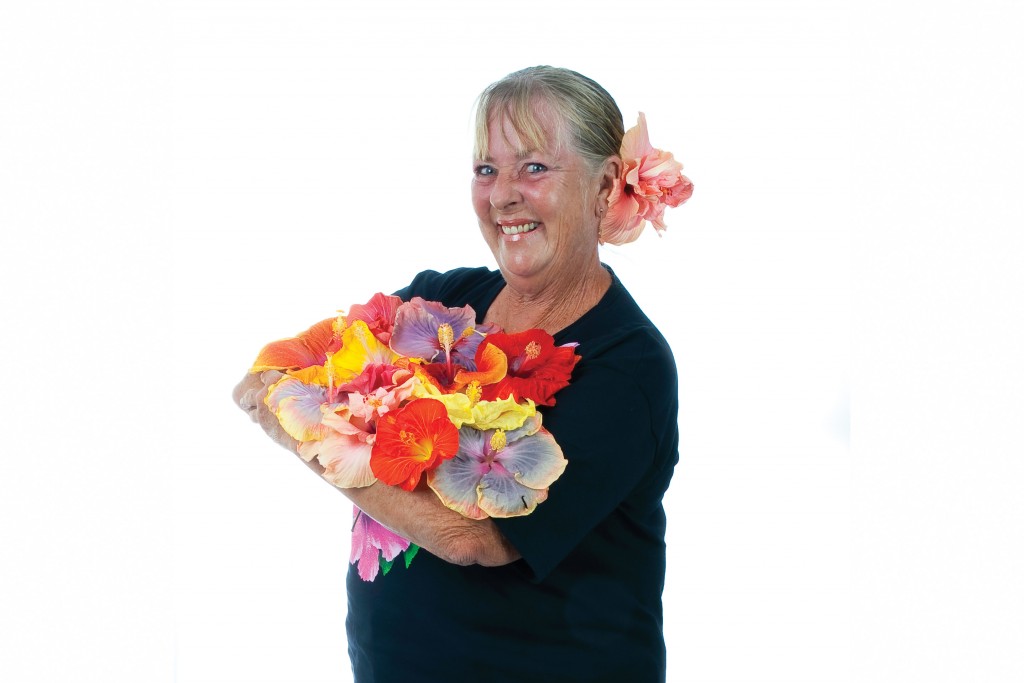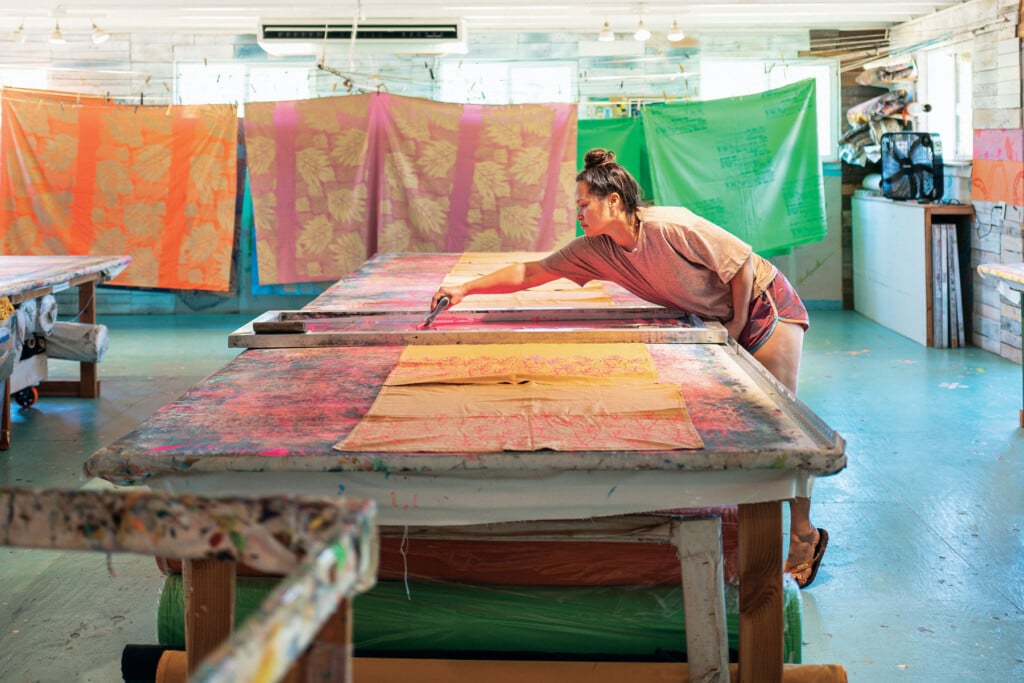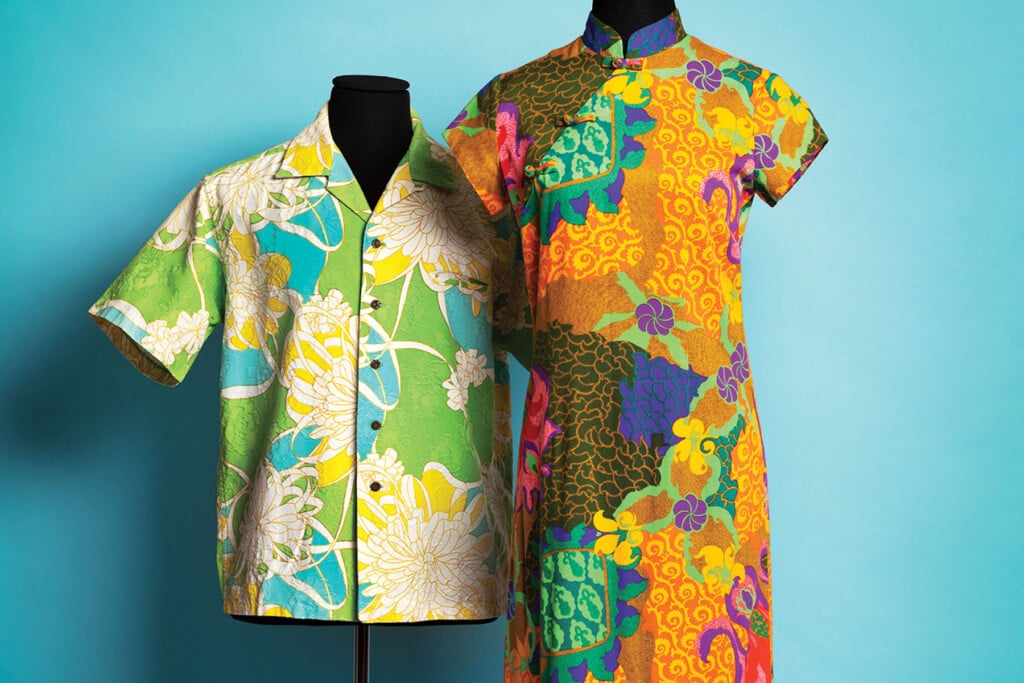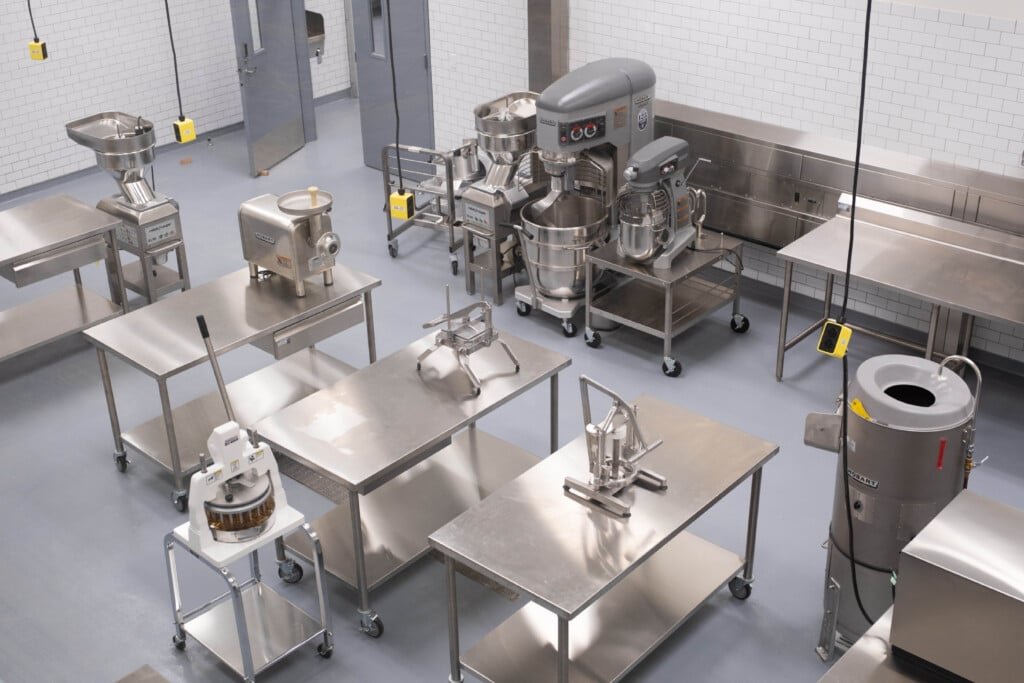Hibiscus Lady Creates Scents

The Problem
The hibiscus has incredible colors, textures and blossoms, but usually lacks a scent. Enter the Hibiscus Lady, Jill Coryell, who has created gigantic, colorful AND sweet-smelling hibiscus that are sold here and on the Mainland. “What sets me apart from most other hybridizers around the world is that I aim for scented, modern hybrids,” she says.
Her Edge
Coryell had a head start versus overseas competitors: Hawaii has the only two species of scented hibiscus in the world — hibiscus waimeae and hibiscus arnottianus — which are where Coryell begins. “I cross them with fancy, modern hybrids (which have sturdier blossoms). If I’m lucky, after four or five generations, I’ll end up with a modern-looking one that’s also scented. It’s maybe 5 percent of the offspring.”
First Step
Hybridizing means combining the genes of two plants to create new plants, says Coryell. “The pollen is the male part of the flower — the ‘pollen pads,’ and stamen — and the ovaries are the female parts.” To hybridize, Coryell dusts pollen from one flower onto the pollen pads of another. Six weeks later — if fertilization occurred — the ovary turns brown and pops open to reveal up to 50 tiny seeds.
Planting and Waiting
Coryell plants those seeds and in six to 12 months gets her first-generation bloom. This is when it gets exciting, she says, because none of the blooms look exactly alike. But from here it may take another four to six generations — four to six years — to get what she wants. Though her data regarding each individual cross is recorded in a computer spreadsheet, most of it also resides in her head.
The Wow Factor
“I keep only the ones that make me gasp,” says Coryell. That could be as few as 30 a year, and she discards the others. Her favorite at the moment is a blue blossom she named Lt. Col. Frank Carlos — to honor her late father-in-law. “I’ve created several that are blue. If you cross two purples you can either get brown or purple, but once in a blue moon that purple will be more blue. It’s not royal blue, more of a sky blue.”
Where to Buy
Hibiscus Lady Nursery plants are sold at the Kapiolani Community College Farmers Market every Saturday morning, and at monthly meetings of the Oahu Nursery Growers Association at Thomas Square in Honolulu. “The purple and blue ones usually go immediately because they’re so rare,” she says.
Hibiscus Lady Nursery
68-240 Mahinaai St., Waialua
(call one day before visiting)
637-9995
hibiscuslady@me.com
hibiscusladyhawaii.com







